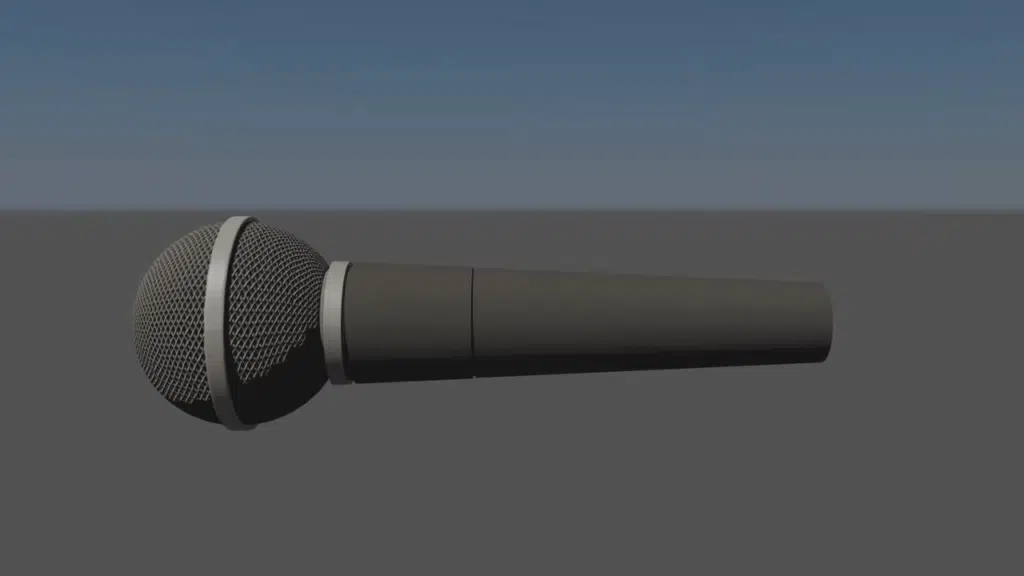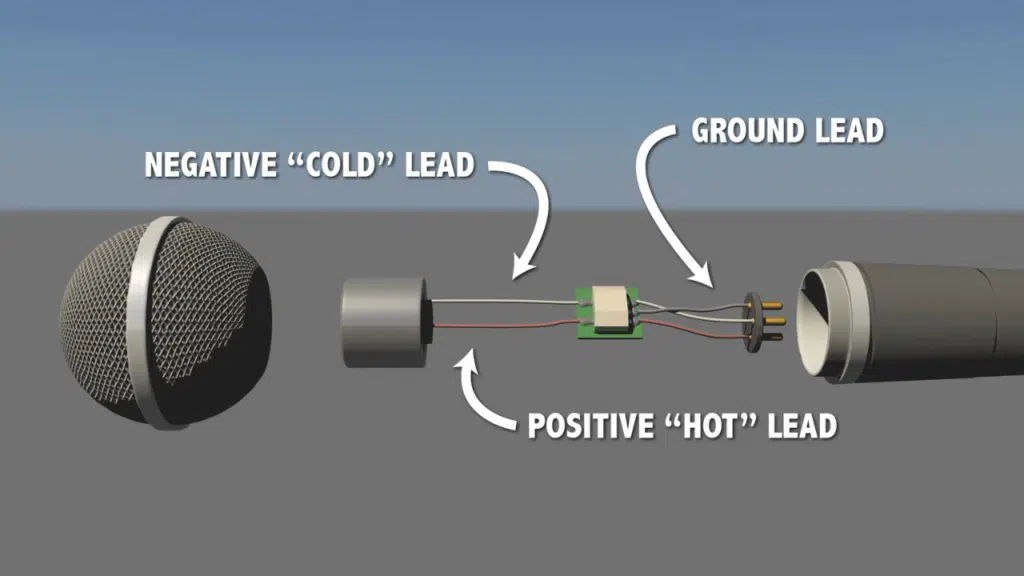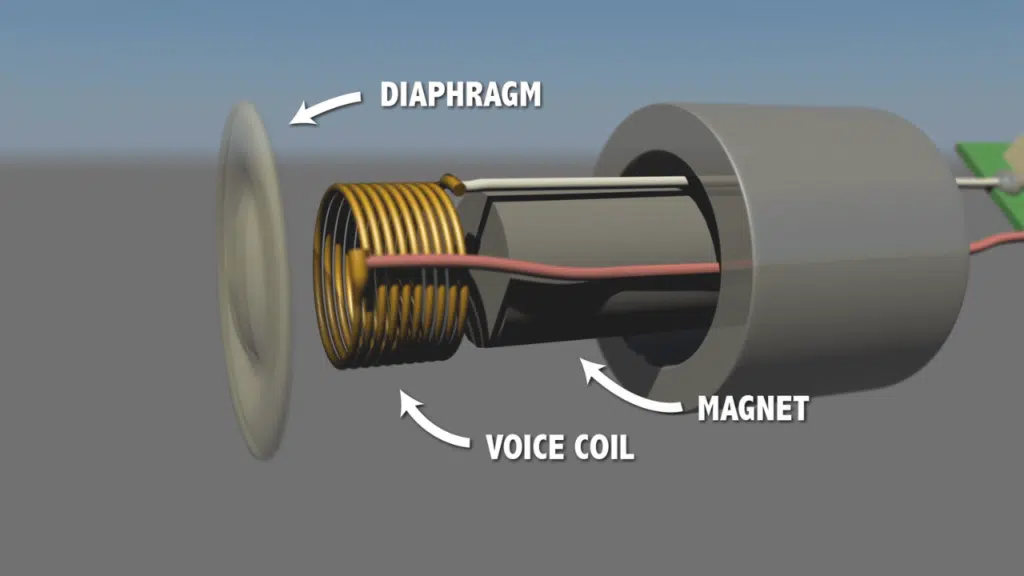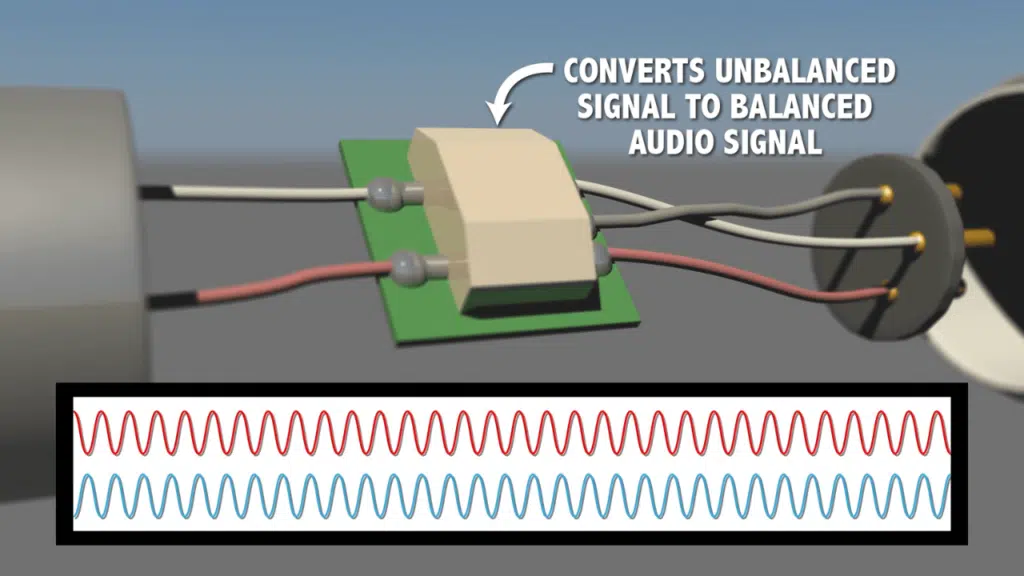In 2024, we can think of our modern life without a microphone. Microphones are going to become more popular day by day.
Because of this popularity, the microphone has been developed in different types, and they solve other problems based on their type.
One of the most popular and useful types of microphones is dynamic microphones.
Today, we will discuss dynamic microphones, including their definition, working principle, advantages, and disadvantages.
Quick Access
ToggleWhat is a Dynamic Microphone?

A dynamic microphone is a transducer that converts sound waves into electrical signals without external power.
It uses an electromagnetic induction principle to convert mechanical energy from sound waves into electrical energy.
Dynamic microphones are widely used in various applications such as live performances, public speaking, broadcasting, and recording studios.
What's inside a Dynamic Microphone?

A Dynamic microphone is built with four different parts. The visible parts of a dynamic microphone are the case, windscreen, and Grill.
Case and Windscreen
The case of a dynamic microphone is usually made of durable materials such as metal or plastic to protect the inner components from damage.
It also helps to reduce handling noise during recording or performance.
On the other hand, the windscreen acts as a filter to reduce wind and breathing noises from entering the microphone.
Grill
The grill is a protective layer of metal or fabric covering the microphone’s diaphragm.
It helps to protect the internal components from dust, moisture, and physical damage while allowing sound waves to pass through easily.
Transducer
The transducer is the heart of a dynamic microphone. It consists of a thin, lightweight diaphragm attached to a coil of wire.
When sound waves hit the diaphragm, they vibrate and cause the coil to move up and down within a magnetic field generated by permanent magnets.
This movement produces an electrical current, which is then sent through the microphone’s cable to the recording or sound system.
Transformer
The transformer converts the low-voltage electrical current from the transducer into a usable output.
It also helps to match the impedance of the microphone to that of the input of the recording or sound system.
XLR Pin Assembly
The XLR pin assembly is the connector that attaches the microphone to a recording or sound system.
It consists of three pins, each with a specific function – ground, positive, and negative.

Three different Leads are used while building a Dynamic microphone: positive “Hot” Lead, Negative “Cold” Lead, and Ground Lead.
How does a Dynamic Microphone work?

A dynamic microphone works through the principle of electromagnetic induction.
When sound waves enter the microphone, they interact with the diaphragm, causing it to vibrate. This diaphragm is attached to a coil of wire, situated within a magnetic field created by a permanent magnet.
The vibration of the diaphragm causes the coil to move back and forth within this magnetic field. This movement generates an electrical current within the coil, mirroring the incoming sound waves. The current is then fed through the microphone’s transformer. The transformer amplifies the current and adjusts impedance to match the input of the recording or sound system.

This electrical current, carrying the original audio information, is then sent through the XLR pin assembly and transmitted to the recording or sound system via the microphone’s cable, which is converted back into audible sound.
This entire process is powered solely by the energy of the incoming sound waves, making dynamic microphones a robust and versatile choice for various applications.
What is a Dynamic Microphone Used For?
As the huge popularity of a dynamic microphone, This microphone has a lot of purposes, including:
- Live performances: Dynamic microphones are often used for live music performances due to their durability and ability to handle high sound pressure levels.
- Public speaking: Dynamic microphones are also commonly used in public speaking engagements, as they can effectively capture the speaker’s voice while reducing background noise.
- Broadcasting: Many radio and television stations use dynamic microphones for broadcast purposes, as they are reliable and cost-effective.
- Recording studios: Dynamic microphones are also famous for recording studios, especially for capturing loud instruments such as drums and electric guitars.
- Podcasting and streaming: With the rise of podcasting and online content creation, dynamic microphones have become a go-to choice for many creators due to their sound quality and affordability.
Advantages of Dynamic Microphones
Dynamic microphones have many advantages over other microphones, which is why they are widely used in various applications. Some of these advantages include:
- Durability: Due to their simple design and sturdy build, dynamic microphones are durable and can withstand rough handling and extreme conditions.
- Versatility: Dynamic microphones can handle high sound pressure levels, making them suitable for loud environments such as concerts or live performances.
- Cost-effective: Compared to other microphone types, dynamic microphones are inexpensive and provide excellent value for money.
- Low self-noise: Dynamic microphones have a low self-noise level, which means they can capture clear and accurate sound without adding any unwanted noise.
Disadvantages of Dynamic Microphones
Besides a lot of pro features of a dynamic microphone, it has a few numbers of cons, which you need to know before purchasing your first or whatever microphone:
- Limited frequency response: Dynamic microphones have a narrow frequency range compared to other microphone types, which may result in a loss of high-frequency details.
- Low sensitivity: Due to the design of dynamic microphones, they are less sensitive than other microphone types and require more gain from the recording or sound system.
- Less detailed sound: A dynamic microphone’s coil and transformer components can cause a loss of sound quality and detail compared to other transducer types.
Conclusion
Dynamic microphones are essential tools in audio and sound recording for their simple design, durability, and reliable performance, which suit various applications.
If you are a musician, public speaker, or audio engineer, dynamic microphones offer many advantages and disadvantages that should be considered when selecting your microphone.
By learning about a dynamic microphone’s different components and functionalities, you can decide which microphone type best suits your specific needs and applications.
At the end of this helpful article, Dynamic Microphone is the best for live performance out of many other microphones due to its durability, versatility, cost-effectiveness, and low self-noise level.
A dynamic microphone is the perfect choice if you are looking for one that can handle high sound pressure levels and deliver accurate sound with minimal noise.



